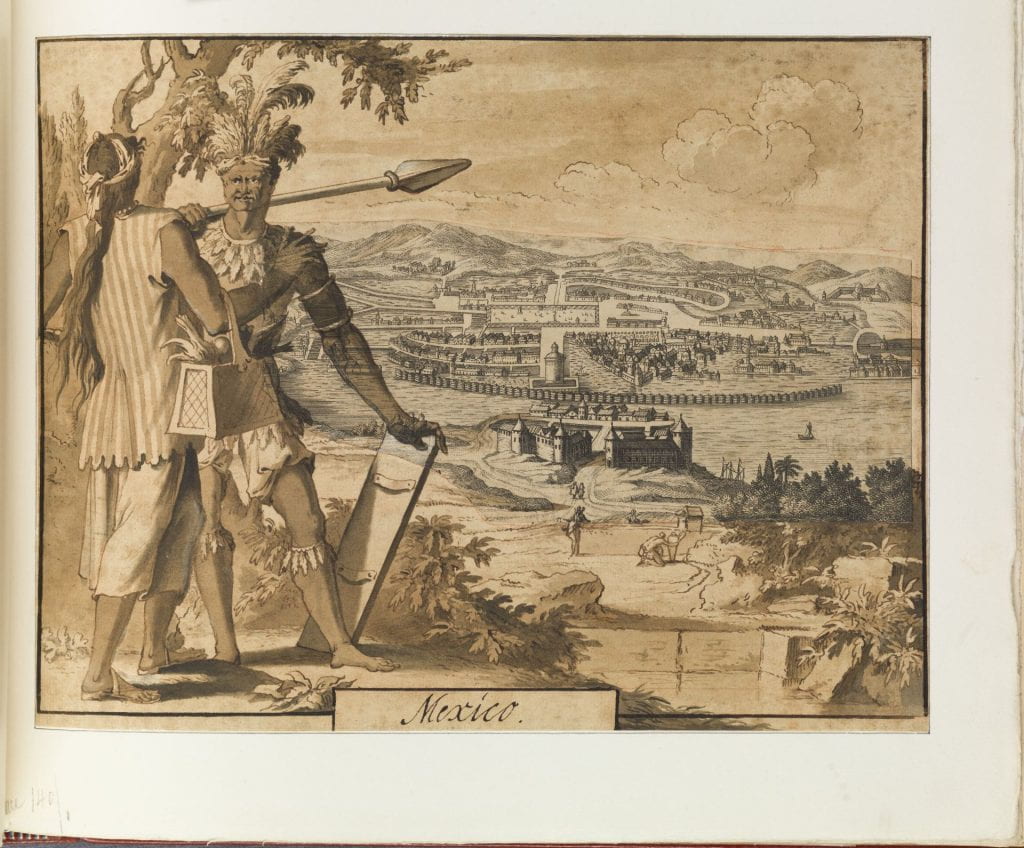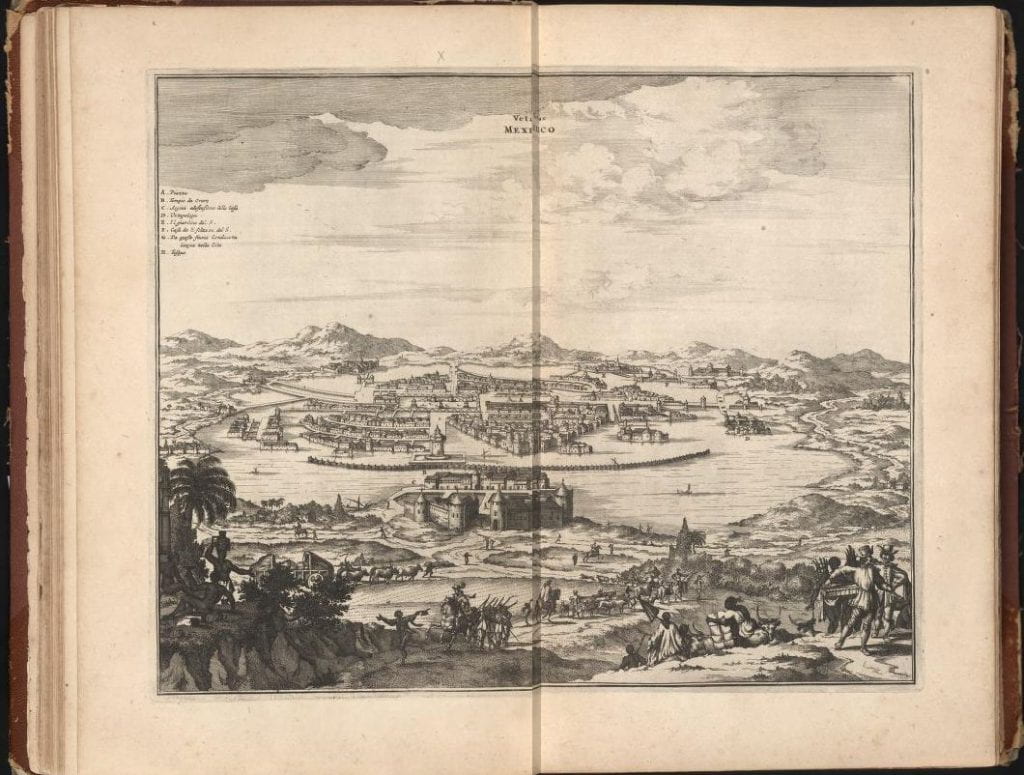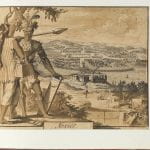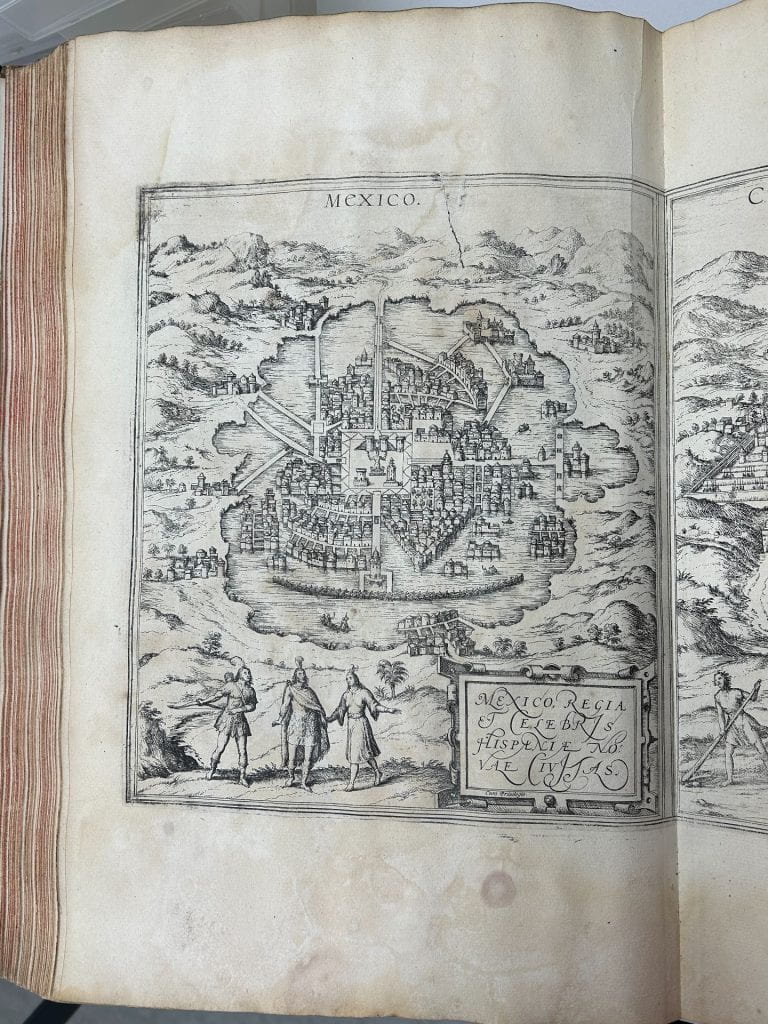Stephen Clarke, Honorary Research Fellow, University of Liverpool
The Lewis Walpole Library has added an obscure and curious item to its collections. It is an anonymous pamphlet of fourteen pages containing two poems, titled on what appears to be a half-title The Origin of Language, and Idea of a Perfect Government. Two Poetical Epistles, to Thamyris. Online searches of the holdings at Yale, Harvard, the Bodleian, and the British Library reveal only electronic links, and actual copies appear to be restricted to the Library of Congress and the Royal Danish Library. The electronic copies suggest that the pamphlet is complete, and what looks like a half-title is in fact the title page. It is 17.5 x 10.cm. in size and a small octavo in format, consisting of two sections of four leaves each, with a final blank leaf. It is in a badly worn but contemporary or near-contemporary half binding, the front board detached and the marbled boards worn. On the remains of the spine is the gilt lettering “E. of Buchan on Language.”
There is a stipple-engraved profile of Buchan after Tassie dated 1797 that has been inserted after the title page, and on the front pastedown a bookseller’s price of 12/- and a small printed cutting advertising the sale of the Buchan Papers. This describes 2,700 original papers addressed to the Earl of Buchan, including his diary, being sold by the autograph collector William Upcott, with a hand-written date 16 January 1836, the year in which Upcott printed a private catalog of his manuscripts. On the front endleaf is the Bibliotheca Heberiana stamp, and there is also a small circular label 1077 at the foot of the front board: this copy was lot 1077 on the fifth day of Part 1 of the Heber sale, 15 April 1834, where it is described as “Buchan (Earl of) on the Origin of Language and Idea of Perfect Government, in two Poetic Epistles, portraits inserted, 1785”. It would appear that Buchan never published it, but rather had a few copies printed for private circulation.
Its interest to the Lewis Walpole Library lies in two inscriptions which the cataloger of the Heber library did not trouble to mention: at the head of the title page is written “Honble. Horace Walpole from the Author”, and beneath the printed title Walpole has added the words “by the Earl of Buchan.”
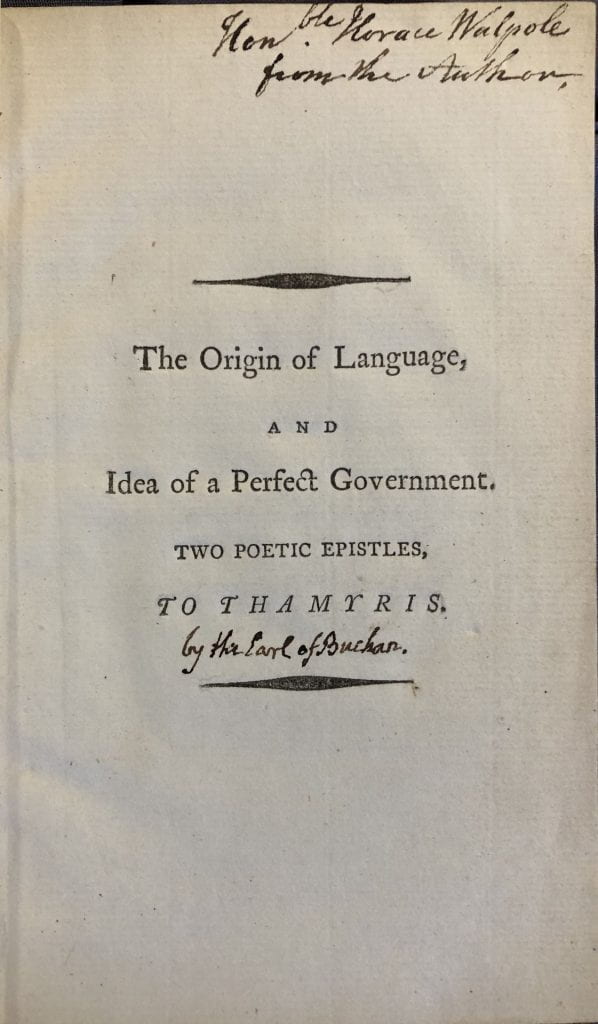
The Earl of Buchan, The Origin of Language, and Idea of a Perfect Government. Two Poetical Epistles, to Thamyris (privately printed, ?1785), title page inscribed by Buchan and Horace Walpole. 496 B85 785. Lewis Walpole Library, Yale University,
David Steuart Erskine, eleventh Earl of Buchan (1742–1829) was an antiquary, a radical Whig, and an eccentric, with an apparently somewhat overbearing manner. From 1747 Lord Cardross, he became Earl of Buchan on his father’s death in 1767. In the 1760s he supported John Wilkes, in the 1770s he supported the cause of American independence, and in the 1790s he corresponded with Christopher Wyvill on parliamentary reform. But he was also an antiquary with a strong interest in Scottish history. He had been elected to the Society of Antiquaries in London and the Royal Society in 1764, and in 1780 founded the Society of Antiquaries of Scotland, into which he enrolled Walpole, though he subsequently became disenchanted with that body and resigned in 1790. He bought the estate on the Borders where Dryburgh Abbey stands and adorned the grounds with a classical temple dedicated to the poets Thomson and Burns. He was painted in 1764 by Reynolds, and Walpole pasted Finlayson’s mezzotint of that portrait and an engraving by Buchan of Icolmkill Cathedral (the abbey of Iona) into his Collection of Prints engraved by various persons of quality.

J. Finlayson after Reynolds Lord Cardross, 1765 mezzotint inscribed by Walpole as Earl of Buchan bound into Walpole’s Collection of Prints engraved by various persons of quality (Strawberry Hill, 1774) Folio 49 3588 v. 1 Lewis Walpole Library, Yale University,
But there was always a whiff of the self-important and the absurd about him: Emma Vincent Macleod’s ODNB article on him notes that “The story of how in 1819 he tried to storm Sir Walter Scott’s sick-room to reassure him that he would personally supervise all the arrangements for Scott’s funeral at Dryburgh has been told many times as evidence of his propensity for the ridiculous.”
Walpole’s connection with him began in about 1778 and lasted until 1792. The first surviving letter, of 24 December 1778, consists of Walpole answering Buchan’s queries on Scottish royal portraits.[i] The next, of 1 December 1781, opens with Walpole’s declaration that he is “truly sensible of and grateful for your Lordship’s benevolent remembrance of me, and shall receive with great respect and pleasure the collection your Lordship had been pleased to order to be sent to me.” That collection did not include The Origin of Language, and Idea of a Perfect Government, as those two poems are both in their headings addressed “To Thamyris, on my Birth-Day, 1785.” The only publication of Buchan’s that featured in the sale of Walpole’s library at Strawberry Hill in 1842 was Buchan’s Discourse… at a meeting for the purpose of promoting the institution of a Society for the investigation of the history of Scotland, and its antiquities, November 14, 1780 (Edinburgh, ?1781), the meeting from which the Scottish Society of Antiquities was founded.[ii]
Buchan’s earnest antiquarian enquiries of Walpole (Buchan’s letters have not been traced) and Walpole’s attempts to answer or deflect them form the substance of his replies. One can sense Walpole’s attempt to distance himself in the opening paragraph of his letter of 23 September 1785:
Your Lordship is too condescending when you incline to keep up a correspondence with one who can expect to maintain it but a short time, and whose intervals of health are resigned to idleness, not dedicated, as they have sometimes been, to literary pursuits… Your Lordship’s zeal for illuminating your country and countrymen is laudable… but a man who touches the verge of his sixty-eighth year, ought to know that he is unfit to contribute to the amusement of more active minds. This consideration, my Lord, makes me much decline correspondence: having nothing new to communicate, I perceive that I fill my letters with apologies for having nothing to say.[iii]
So the letters proceed, with Walpole complaining of his being gout-ridden and superannuated while fielding Buchan’s continued enquiries on Scottish antiquities and engraved Scottish portraits. As early as 1782 Walpole told Lady Ossory that Buchan “tells me a vast deal about our Antiquarian Society at Edinburgh, and generally asks me many questions about past ages”, and again that “he will extract from me whatever in the course of my antiquarian dips, I have picked up about Scottish kings and queens, for whom in truth I never cared a straw. I have tried everything but being rude to break off the intercourse”.[iv] The concluding letter, of 29 November 1792, has Walpole firmly refusing to provide Buchan with a drawing of the Countess of Lenox’s jewel, which Walpole recorded in his Description of Strawberry Hill as “a golden heart set with jewels, and ornamented with emblematic figures enamelled, and Scottish mottoes; made by order of the Lady Margaret Douglas, mother of Henry Lord Darnley, in memory of her husband Matthew Stuart, Earl of Lenox and Regent of Scotland, murdered by the papists.” He insisted that it was too valuable and too delicate, and that he never let it out of his hands. Buchan annotated the letter “I did not indeed advert to the fiddle-faddle business of copying the jewel, but thought Lord Orford might wish to communicate its likeness, though in one point of view only, to the Antiquaries, for his own honour and glory!”[v] There is no further surviving correspondence.
As for the two poems, they do nothing to call into question Buchan’s reputation for eccentricity. Both are addressed to Thamyris, the Thracian singer who in Greek mythology was noted for his love of Hyacinth (and so is claimed to be the first male to have loved another male), and for having challenged the Nine Muses to a competition, which he inevitably lost. The first poem, The Origin of Language, after an opening lament on the political discord of the times, seeks to explain the inception of language in mimetic terms:
But know that language Reason taught to grow
From simple sounds, as Man began to know
His hopes and fears, His pleasures, and his pains,
How Fire consumes, How food his Frame maintains…
Buchan associates the sound S with the hissing of fire extinguished in water, the labial BA for no clear reason as expressing life, ABA as God, and BA. S as life extinguished, or death. The Idea of a Perfect Government is scarcely less extraordinary: a heavenly muse reveals to the poet a constitutional model consisting of Senate, nobility and King. The corruption of elections is to be avoided by the Senate being elected by rotation, with one seventh retiring every year, and potential senators being subject to veto by one fifth of the voters, and dismissal for abuse. Nobles were to “hold Patent of Rank and of superior mould” from the Senate, while the figure of Prince, Father, or King, would be responsible for enforcing laws, but could not issue pardons without consent of Senate and Nobles. As for religion, it would be divorced from the State, and all theological strife would miraculously disappear as:
In every City Temples let there be,
Where Men of ev’ry faith in each degree,
With Heav’nly Music and Seraphic praise,
To the same GOD ador’d in various ways.
Sadly, what Walpole made of this farrago is unrecorded.
__________
[i] The letters quoted from Walpole to Buchan are all in W.S. Lewis ed., the Yale Edition of Horace Walpole’s Correspondence (New Haven and London: Yale University Press, 1937–83), 15, between pages 138 and 234 and at 343–44.
[ii] Allen T. Hazen, A Catalogue of Horace Walpole’s Library (New Haven and London: Yale University Press, 1969), 2, 29. The pamphlet was bound into volume 42 of the Tracts of the Reign of George the 3rd that Walpole compiled.
[iii] Correspondence, 15, 185–88.
[iv] Letters of Walpole to Lady Ossory of 3 and 10 November 1782, Correspondence, 33, 359–64 at 3363 and 367–71 at 368.
[v] Correspondence, 15, 233–34, note 1 and heading to letter.

